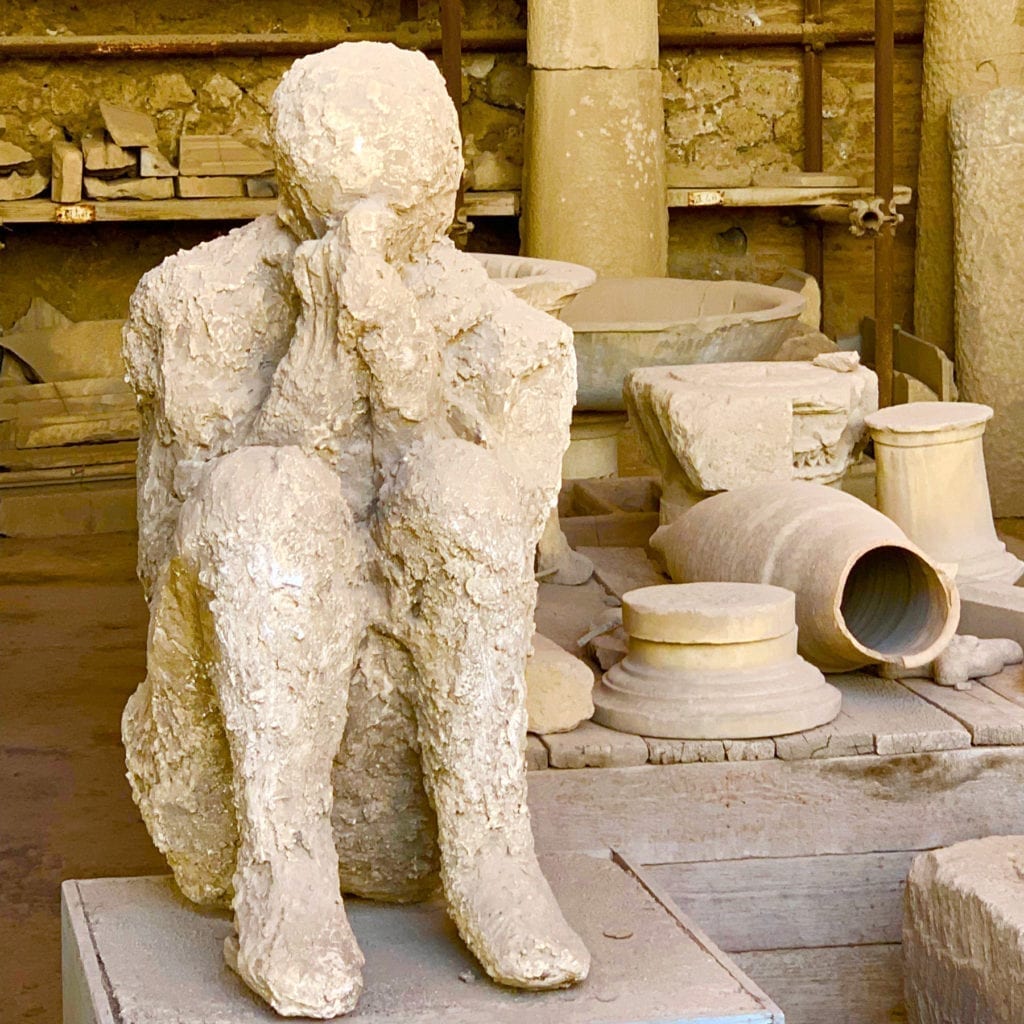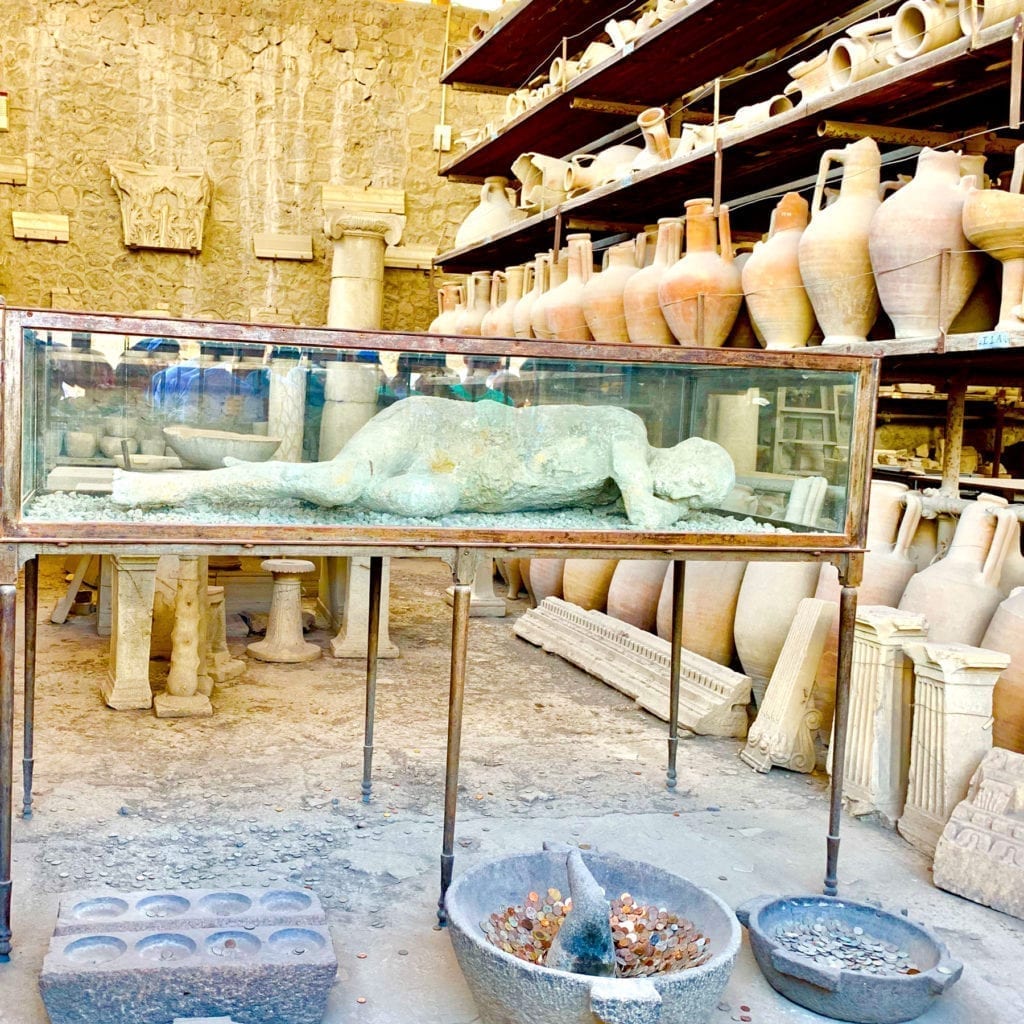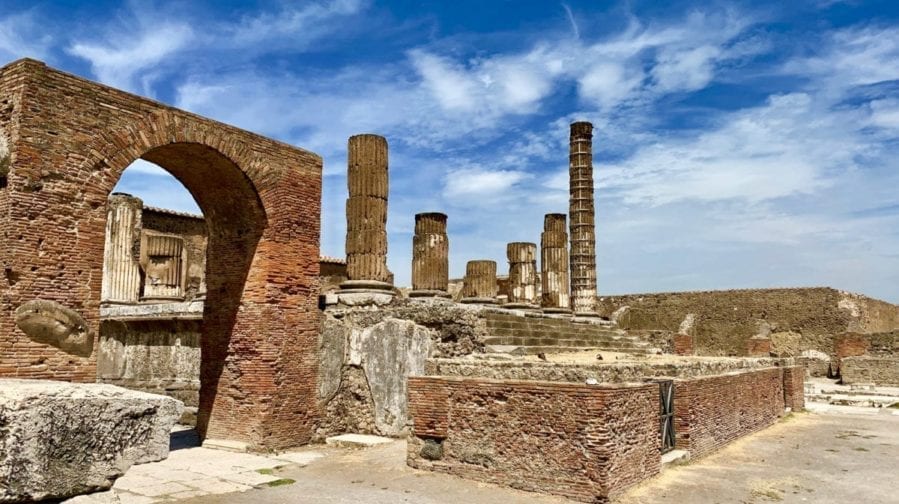If the concept of Pompeii creeps you out, you should still go. We’ve all heard the tragic story. Mount Vesuvius erupted in 79 AD. In one day, an entire city drowned in hot ash. Today, many of us picture lava pouring into the lavish city. I know I did. But it was requisite ash, mud, and rocks that buried Pompeii.
Listen to the podcast version with a click below.
The remnants of Pompeii’s people are one of the reasons for this lava misconception. We see the Pompeii body casts and presume a layer of lava preserves their final moments.

Pompeii Casts Haunt You – In a Good Way
But they’re not bodies encased in lava. In fact, these artifacts are plaster casts. Nor was it lava that destroyed the glorious city, but fiery hot ash. It buried the people… but their remains long ago deteriorated to dust. When you visit Pompeii, it’s the first thing they tell you. To ease your mind before entering the tour, “There are no remains inside the casts on the tour,” the guide says. “It’s not haunted,” they add as consolation. They’re right… but also wrong. That’s because the Pompeii experience will haunt you. It’s a poignant reminder that nothing lasts forever. All things pass.
Pompeii’s famous plaster casts didn’t arise until 2,000 years after the eruption. Giuseppe Fiorelli, an archaeologist, excavated the 9 feet of Pompeiian ash. Within he discovered pockets where people had been. They were voids rather than remains. That’s because many of their bodies turned to dust over the centuries. Still, imprints remained – embedded into the compressed ash. So, Fiorelli poured plaster into these pockets. This is where the Pompeiian landmark lives today.
Thus removed, the casts illuminated amazing details. It’s as if the people became sculptures. Like in a fairytale. It’s a bit unreal. But at the same time, they also live on this way. We see their humanity; down to the embroidery that decorates their hems. After all, it’s the specifics that burn people into our memory.
There’s emotion in their posture as well. One Pompeii body cast clutches his legs to his chest. You can picture him rocking to soothe himself through the situation. We’ve all felt despair. But it’s hard to imagine that level of it without facing death itself. The most powerful position, though, is the child. he lies in the fetal pose. On his side, this could be a big baby in a womb. It gives one hope that perhaps the child somehow felt that way in the end. Bodies do seem to tell stories in their shapes when captured this way.
Pompeii Casts Shadows

Pompeii’s well known for these ghostly casts that hot ash formed around victims of the eruption. People suffocated on ash in the air. If it’s possible to drown in fire, this is it. But the ash wasn’t only a killer. It also captured that moment. When it covered them, ash also preserved the amazing details in their clothing and faces. It made them memorable. Thus, the plaster casts created shadow replicas of a particular time and place.
This creates a palpable tension when you visit. It’s a combination of emotions. Part of it lies with a fearful shame – like looking at a car crash. It’s a wretched thing at first, the nakedness of death. Nobody wants to witness the worst experience of someone’s life. After all, these casts are portraits of strangers in their dying moments. It’s intimate and it hurts. That’s a real person in full exposure at their most vulnerable. One can’t help but feel your heart swell for them.
The Pompeiian in the picture above seems serene. It somehow feels like an even more private moment. Like interrupting someone’s nap. They look so fragile too. Delicate. One can sense the defenseless stage when the hot ash fell upon this sleeping person. Were they blessed to sleep through it? This may have been one of the luckiest Pompeiians that day. It serves up a thoughtful reminder too. There’s a lucky person in any situation. Look for them to find a silver lining in any story.
